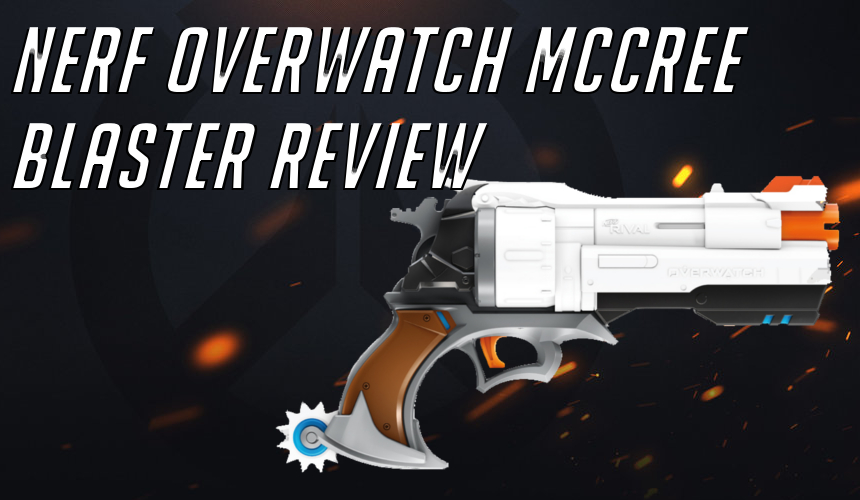Of the three Overwatch blasters, the McCree blaster is the one that made the most compromises. It’s a lovely prop with nice features, including a moving hammer and spur, and an included badge. However, the dimensions aren’t quite the same as those of the in-game weapon (for sensible reasons). In addition, the blaster operation has a lot to be desired. It’s still fun, but it might not be $40 worth of fun.
The Oversized Rival Jolt?
In addition, there has to be room within the blaster for both:
- A large enough propulsion system to fire at least one Rival round.
- Some kind of revolver-like usability in reloading.
In this case, the blaster fires one round at a time. Pulling back on the slide in front flips out the “cylinder” to expose the single barrel; it also cocks the hammer. Pushing the slide back closes everything, and pulling the trigger fires the blaster. Note that the hammer can be pushed back and released without priming the blaster itself, if you feel like just making the hammer click.
The blaster grip is large, the trigger has a nice solid pull, and there’s even a spinning spur at the base for some idle entertainment. The blaster itself is solidly built. Using it, however, grow uncomfortable for the priming hand fairly quickly. The need for maintaining some degree of model accuracy results in not having a good way to grip the priming slide. It may be a nice prop, but it’s clearly not meant for extended battle.
Opening it Up
The plunger tube sits in the bottom of the “cylinder”, and feeds air upwards and around into the barrel. The blaster primes by having the catch on a sled, moving it backwards toward the plunger head, then moving the entire thing forward once the spring is compressed. It’s an interesting way to fit everything inside the blaster, even if the end result is just a one-shot blaster.
Make the Shot Count
In terms of performance, the blaster is nothing to write home about. In my testing, it averaged just 77FPS, which, to be fair, isn’t far off the 80FPS box claims. However, due to the awkward nature of priming the blaster and loading it, it’s hard to fire more than one ball every four seconds.
Last Word

